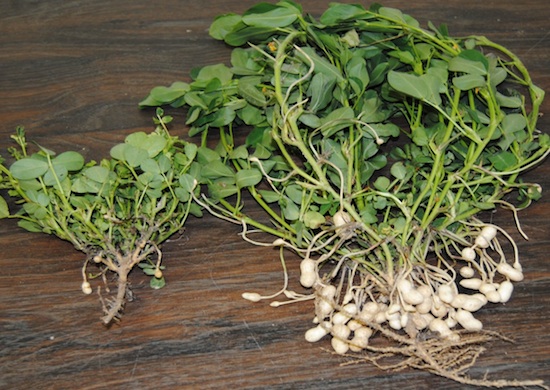A tiny insect proved to be a formidable foe for Georgia farmers in 2013. Whether thrips will deliver a similar punch in 2014 remains to be seen.
“Certainly after this past year, if farmers weren’t thinking about thrips before, they’ll be thinking about them this year,” said Mark Abney, peanut entomologist with the University of Georgia College of Agricultural and Environmental Sciences.
There are more than 7,000 species of thrips, but only two cause problems for Georgia farmers and UGA researchers — tobacco thrips and western flower thrips.
These two thrips caused widespread damage in peanut fields across the state last year. This was possibly due to abnormal environmental conditions, including a mild winter combined with a colder spring and sporadic rainfall throughout the summer.
Resistant plants aren't fullproof
Over the past couple of years, thrips and the devastating disease they transmit,— tomato spotted wilt virus (TSWV), — were not an issue for peanut farmers who plant TSWV-resistant varieties. This is largely because of the widespread planting of TSWV resistant peanut cultivars and generally low thrips pressure on peanuts. Not anymore.
“You definitely need to continue to use the practices that are recommended by the University of Georgia for thrips and virus management,” Abney said.
UGA Extension recommends peanut farmers plant later in May than in April, as earlier planted peanuts are more likely to be infested by thrips. Also, planting peanuts at higher plant densities reduces the incidence of the virus, so higher seeding rates are encouraged.
They love cotton, too
While thrips’ impact on peanuts is seen mostly through the transmission of TSWV, the pests can severely damage cotton by sucking moisture out of the plant. This can stunt cotton’s growth and cause leaves to be misshapen and crinkled, which is what many cotton plants were left with this growing season.
“They’re always bad when we plant cotton real early,” said Phillip Roberts, a cotton entomologist with UGA Extension. “Thrips are always a significant pest on April-planted cotton.”
Like Abney, Roberts is uncertain as to why more cotton acreage was impacted by thrips last year, but suggests the cooler spring may have delayed their buildup.
Thrips’ peak season is typically early spring, from March-April. During the winter, they feed on weeds, their temporary host until spring crops are planted.
Weather plays a big role
As temperatures increase, so does the population of thrips. Winter weeds begin to die in the spring and thrips move en masse to the younger, immature plants in the fields. Thrips also benefit from the shedding of pine pollen, a significant source of protein.
When weather conditions are favorable and plenty of hosts are available, the populations of thrips thrive. This was the case in 2013.
“If everything clicks in a year, their populations explode,” said Rajagopalbabu Srinivasan, a UGA entomologist based in Tifton.
With surging populations come more opportunities for TSWV transmission. Like thrips, TSWV can affect multiple hosts, and both can be imminent threats to some of the state’s top agricultural commodities. Tomato and peanut crops suffered heavily in the ‘90s.
That’s why peanut farmers are encouraged to take action so a similar fate doesn’t occur this upcoming planting season.








